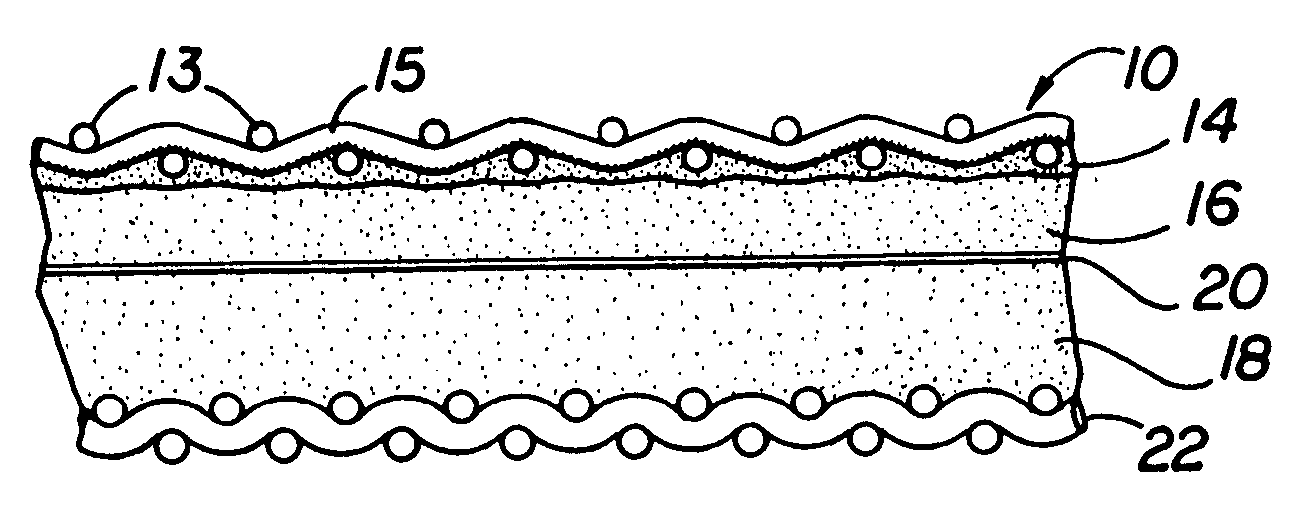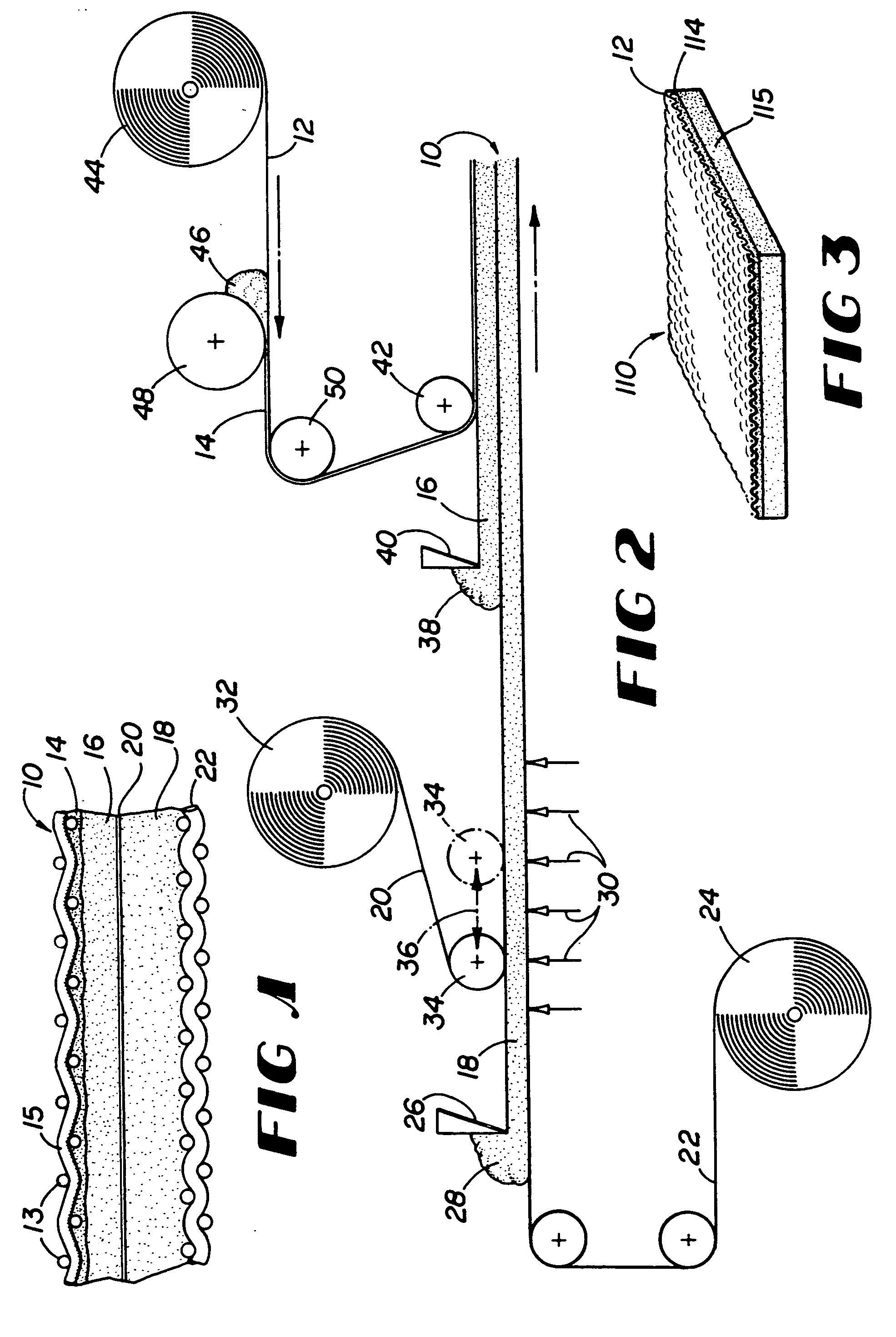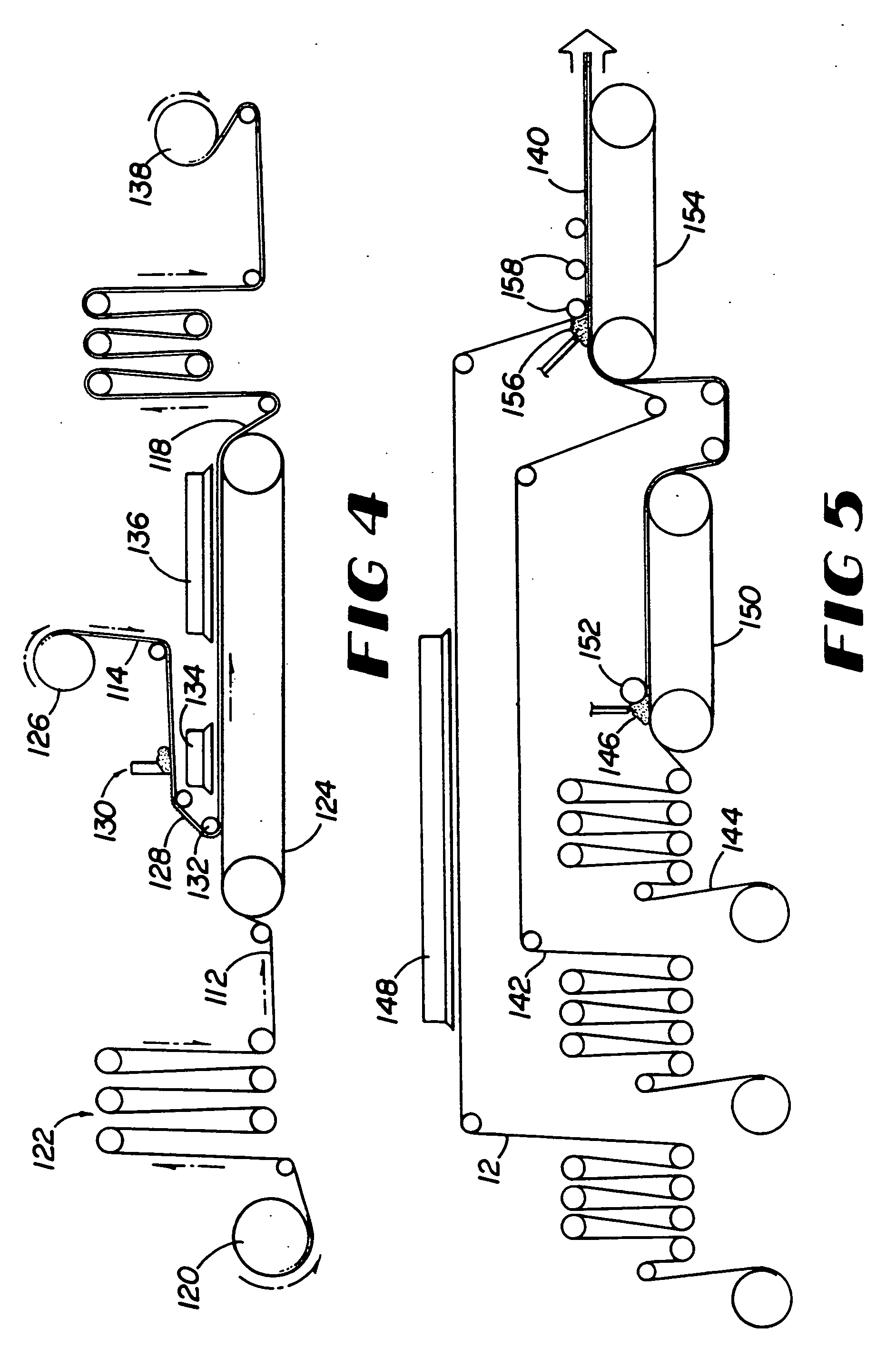Floor covering with woven face
a technology of woven face and floor covering, applied in the field of floor coverings with woven faces, can solve the problems of insufficient resistance to rapid and extensive deformation, nylon is relatively unstable dimensionally, and hard wearing, and achieves the effects of increasing the change rate of a.sub.b, dimensional stability, and reducing the rate of change of a.sub.b
- Summary
- Abstract
- Description
- Claims
- Application Information
AI Technical Summary
Benefits of technology
Problems solved by technology
Method used
Image
Examples
example 2
Precoat
[0122]
2 Parts per hundred resin (phr) Component 55 E-190 base latex from National Starch.sup.1 55 water 1 sage (natural foaming agent) 2.2 Para-Chem 277 thickener.sup.2 1.5 Intersept .RTM. Antimicrobial.sup.3 2.2 Eagleban SP-120 (phosphorus / bromine dispersion flame retardant).sup.4 .sup.1National Starch and Chemical Company, 195 Ottley Drive, N.E., Atlanta, GA 30324. .sup.2Para-Chem, Hwy 14 / PO Box 127, Simpsonville, South Carolina 29681. .sup.3Interface Inc., 2589 Paces Ferry Rd., Atlanta, GA 30339. Intersept is a phosphorus / amine containing antimicrobial composition .sup.4Eagle Systems Corporation, P.O. Box 888018, Atlanta, GA 30356
[0123] Precoat 14 is direct coated onto fabric 12 with an overdriven, weighted roll with a roll to web ration of 1.3 (meaning that the roll surface speed is 1.3 times the surface speed of the web in contact with the roll).
[0124] C. Fabric Stabilizing Layer
[0125] If desired, a fabric 12 stabilizing layer (not shown in FIG. 1 but shown in FIGS. 3 an...
example 3
Backing Layer
[0131]
3 Preferred number of parts Range in wt % based on Component per hundred bitumen final composition Propane D Asphalt (Shell 100 25-40, bitumen) more particularly 27-33 Calcium Carbonate 175 45-65, more particularly, 55-65 R45HT Poly BD 31.95 3-20, (Atochem polybutadiene more particularly 4-16 polyol) 143L (Dow Chemical 4.8 0.4-3.5, Co. diphenylmethane more particularly 0.6-2.4 diisocyanate)
[0132] The components may vary by as much as 10 pph. The amount of isocyanate added is generally proportional to the amount of polyol used, generally around 15%. The formulation set forth above can be modified by adding a catalyst for the reaction between the polyol and the polyisocyanate, and / or by substituting aluminum trihydrate (ATH) for calcium carbonate up to approximately twenty-five percent (25%) of the calcium carbonate. For instance, a backing layer formed by reacting 100 parts Shell Propane D Asphalt, about 43.75 parts aluminum trihydrate, 131.25 parts calcium carbona...
example 4
Resilient Layer
[0137]
4 Component Parts Textile Rubber and Chemical Co. 6.05 FP-C433 polyol Textile Rubber and Chemical Co. 1 C-344 KD isocyanate
[0138] G. Fabric Backing
[0139] Fabric backing 22 may be selected from a wide variety of conventional synthetic and natural backing materials, including various woven and non-woven fabrics. A preferred material for backing 22 is ActionBac.RTM. 3872 woven polypropylene carpet backing available from Amoco Corporation.
[0140] Flooring 10 has good physical properties. Among them:
[0141] wear resistance is good
[0142] stain resistance is good
[0143] soil resistance is excellent
[0144] flame resistance is good
[0145] smoke emission is low
[0146] resilience is comparable to conventional commercial carpet
[0147] liquid permeability is essentially zero
[0148] "cleanability" is excellent; the produce is "moppable"
[0149] stability is good, particularly when using polyester family fibers
[0150] sound attenuation is good (better than conventional hard surface floor...
PUM
| Property | Measurement | Unit |
|---|---|---|
| degree of crystallinity | aaaaa | aaaaa |
| glass transition temperature | aaaaa | aaaaa |
| glass transition temperature | aaaaa | aaaaa |
Abstract
Description
Claims
Application Information
 Login to View More
Login to View More - R&D
- Intellectual Property
- Life Sciences
- Materials
- Tech Scout
- Unparalleled Data Quality
- Higher Quality Content
- 60% Fewer Hallucinations
Browse by: Latest US Patents, China's latest patents, Technical Efficacy Thesaurus, Application Domain, Technology Topic, Popular Technical Reports.
© 2025 PatSnap. All rights reserved.Legal|Privacy policy|Modern Slavery Act Transparency Statement|Sitemap|About US| Contact US: help@patsnap.com



